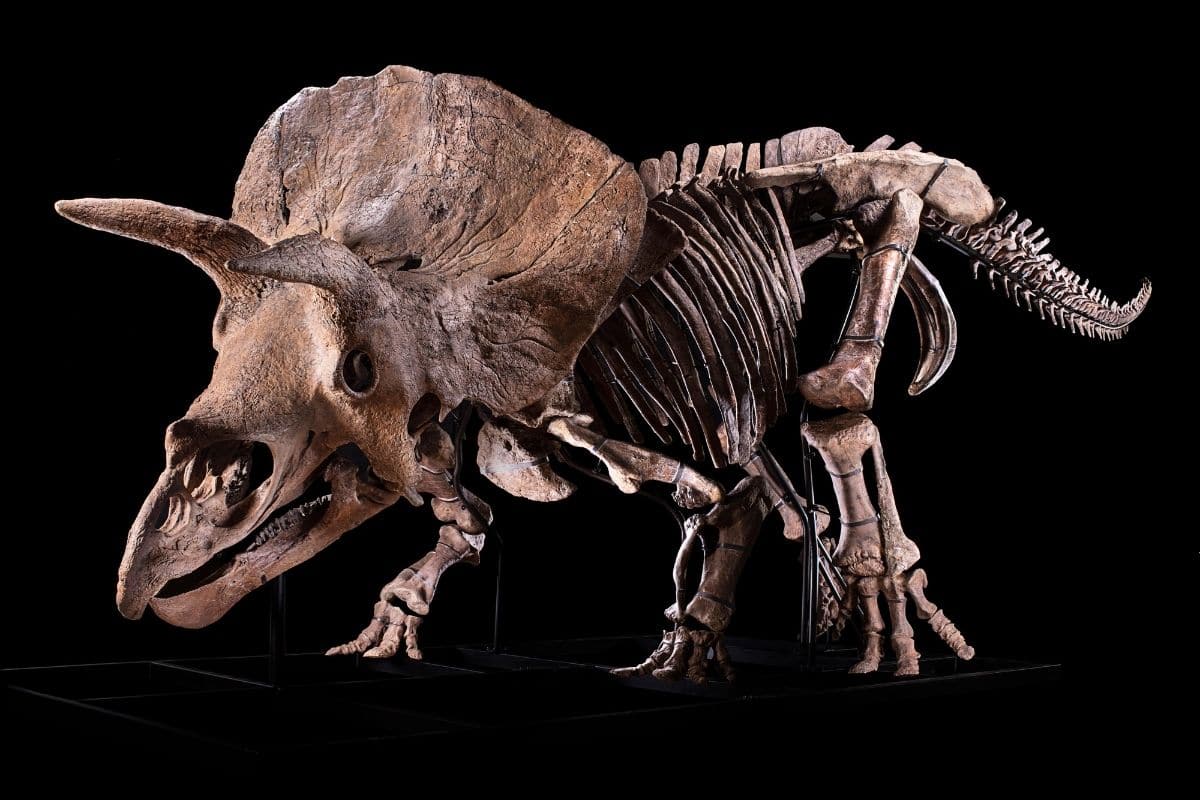

The theory that these combative dinosaurs used their horns to fight appears to have been confirmed.
In 2014, researchers stumbled upon the fossilized remains of a huge triceratops. Because of its large size, the dinosaur was soon nicknamed ‘Big John’. Big John went through quite a bit during his lifetime. For example, there is a large gaping hole in his skull. And that hole was probably caused by the horn of a congener, researchers now suspect.
Triceratops
The Triceratops gets its name from the horns on its body. Triceratops literally means something like ‘face with three horns’. The dinosaurs of this genus had one horn on their nose and two on the head. Although these are the most characteristic features of the Triceratops, it was still unclear what the horns were for. Some scientists thought that the dinosaurs used the horns for fighting. Others suspected that the horns were too weak for that and rather served as a display of power.
Study
To get the bottom stone out, researchers are in the new study bent over the fossilized remains of Big John. As mentioned, Big John has a considerable hole in his skull. Until now, how this hole came to be was shrouded in mystery.

Big John’s partial skull with the gaping hole visible. Image: Zoic Limited Liability Company, (Trieste, Italy)
After analyzing the hole, the researchers make an interesting discovery. For example, the team found evidence of newly formed bone around the edges of the hole, as well as signs of inflammation. This indicates that the gaping hole was caused by traumatic injury. It is possible that Big John suffered the injury while he was alive and the wound had already partially healed when he died at least six months later.
on the fist
A pressing question, of course, is how Big John sustained this injury. The size of the hole and other features seem to indicate that a congener’s horn may have been the culprit, the researchers say. It would mean that the triceratops had a fight with a congener, who then stabbed it with its horn.
fighter bosses
It means that triceratops may have been decent fighters, using their horns to sting conspecifics. Although this has already been suspected to some extent, the current study puts that theory more firmly in the shoes. “Our findings do indeed indicate that Big John received his keyhole wound during battles with other triceratops,” the researchers write in their study.
Thanks in part to the horns, triceratops must have been an impressive sight. And now researchers have also deciphered the likely function of these horns. By the way, that’s not the only thing. Because whatever Big John’s wound tells us is that the healing process in these dinosaurs is strikingly similar to that of mammals.
Source material:
†Bone injuries suggest ‘Big John’ the triceratops was fighting other ‘trikes’” – Scimex
Image at the top of this article: Zoic Limited Liability Company, (Trieste, Italy)